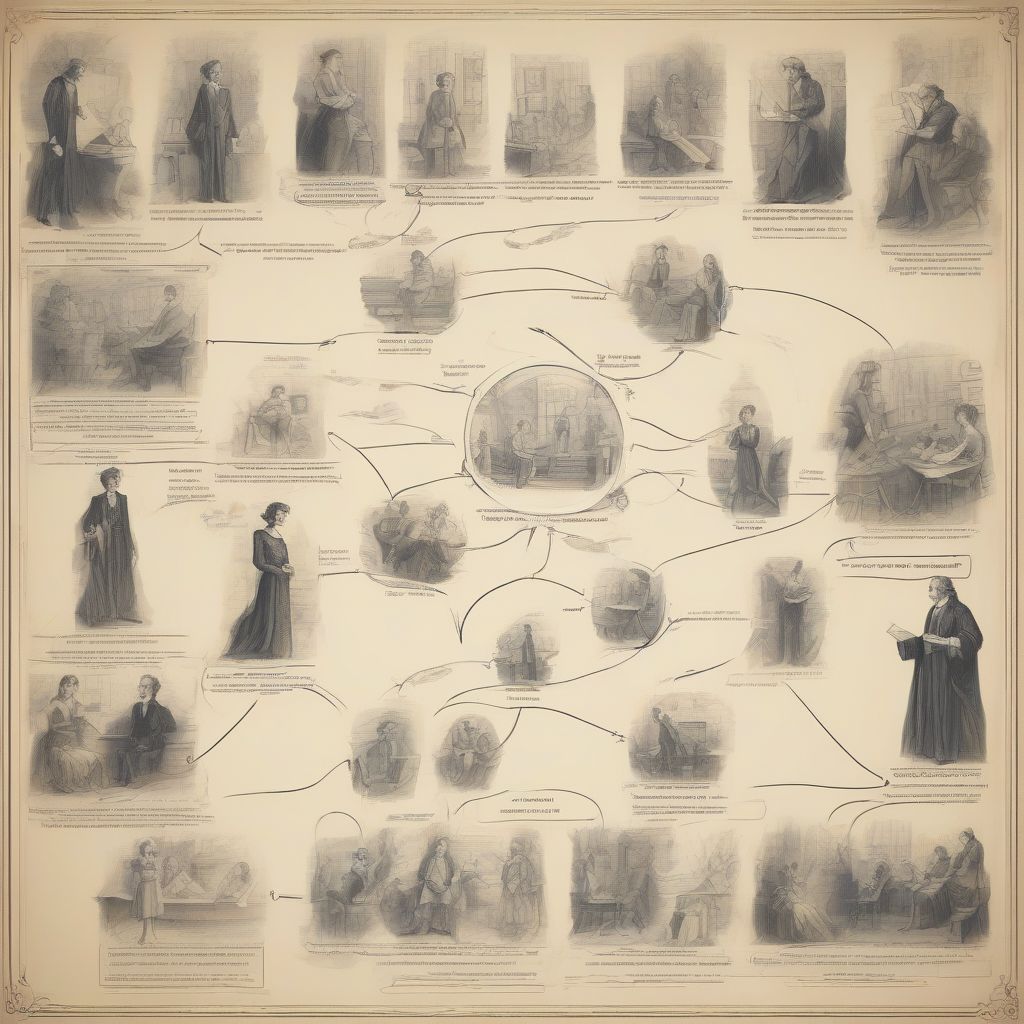Have you ever finished a book and felt deeply connected to a character, as if you’d journeyed alongside them? That’s the magic of compelling character development. But how do authors achieve this, and how can we, as readers, analyze it? Understanding character development is key to unlocking a deeper appreciation for literature. This article will provide a comprehensive guide on how to examine character development in literary works, offering practical tools and techniques for insightful analysis.
What is Character Development?
Character development, also known as character arc, is the transformation or inner growth of a character over the course of a story. It’s how a character changes, learns, and adapts in response to the events and conflicts they encounter. This development can be subtle or dramatic, positive or negative, but it’s always central to a compelling narrative. As acclaimed author Kurt Vonnegut purportedly said, “Every character should want something, even if it is only a glass of water.” This desire, and the pursuit of it, often fuels character development.
Key Elements of Character Development
1. Character Background and Motivation
Understanding a character’s past experiences, beliefs, and values provides crucial context for their actions and motivations. What drives them? What are their fears and desires? Exploring these questions illuminates the foundation upon which their development is built.
2. Internal and External Conflicts
Conflicts are the catalysts for change. Internal conflicts, like moral dilemmas or personal struggles, force characters to confront their inner selves. External conflicts, such as clashes with other characters or societal pressures, challenge their resilience and adaptability.
3. Relationships and Interactions
The relationships a character forms and the interactions they have with others shape their development. How do these relationships influence their choices and perspectives? Who are their allies and antagonists, and what impact do these individuals have on their growth?
4. Character’s Actions and Decisions
A character’s choices reveal their values and priorities. Analyzing their actions and decisions provides insights into their evolving motivations and thought processes. Do their actions align with their words? How do their choices impact the narrative and other characters?
5. Changes in Thoughts and Beliefs
Character development often involves a shift in a character’s perspective. How do their beliefs and values change throughout the story? What experiences or interactions lead to these transformations? Tracking these changes helps reveal the depth and complexity of their growth.
Techniques for Analyzing Character Development
1. Pay Attention to the Narrative Voice
The narrative voice can offer valuable clues about a character’s inner thoughts and feelings. Is the narrator reliable or unreliable? How does the narrative perspective shape our understanding of the character’s development?
2. Track Changes in Dialogue and Language
The way a character speaks can reveal much about their personality and growth. Do their speech patterns change throughout the story? How does their language reflect their evolving emotions and perspectives?
3. Identify Key Turning Points
Pinpoint the pivotal moments that significantly impact a character’s journey. These turning points often mark a shift in their motivation, beliefs, or relationships.
4. Compare and Contrast the Character at Different Stages
Analyzing how a character behaves and thinks at the beginning, middle, and end of the story can highlight their transformation. What has changed, and what has remained constant?
5. Consider the Theme and Message of the Work
How does the character’s development contribute to the overall themes and message of the literary work? Does their journey reinforce or challenge societal norms?
Examples of Character Development in Literature
- Elizabeth Bennet in Pride and Prejudice: Elizabeth’s initial prejudice against Mr. Darcy gives way to understanding and love as she learns to overcome her preconceived notions.
- Scout Finch in To Kill a Mockingbird: Scout matures from a naive child to a compassionate young woman as she witnesses the injustices and complexities of her community.
- Ebenezer Scrooge in A Christmas Carol: Scrooge’s miserly nature transforms into generosity and kindness after his encounters with the Ghosts of Christmas Past, Present, and Yet to Come.
Analyzing Themes and Motifs Related to Character Development
Themes like redemption, resilience, and self-discovery are often closely intertwined with character development. Exploring these themes can enhance your understanding of a character’s journey. You can learn more about analyzing themes and motifs in classic literature by exploring resources available online. Similarly, understanding how to compare themes across multiple literary works can offer valuable insights into recurring patterns of character development.
 Character Development Analysis
Character Development Analysis
Conclusion
Examining character development is a rewarding process that deepens our understanding and appreciation of literature. By paying close attention to a character’s background, motivations, conflicts, relationships, and changes in thoughts and beliefs, we gain valuable insights into the human condition. Analyzing character development also enhances our ability to connect with stories on a more profound level, allowing us to empathize with characters, learn from their experiences, and reflect on the complexities of life. We encourage you to share your thoughts and experiences with analyzing character development in the comments below! What are some of your favorite examples of compelling character arcs? Let us know! And for those interested in further exploring literary analysis, consider visiting our articles on how to compare themes across multiple literary works and how to analyze themes and motifs in classic literature.



